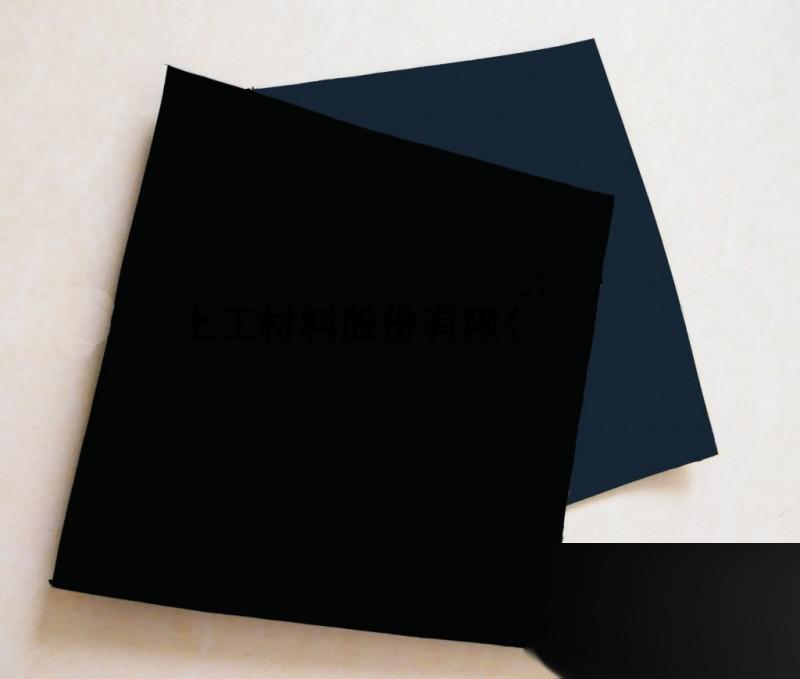Product Overview:
Shandong Tianhai Polyvinyl Chloride (PVC) Tunnel Waterproofing Membrane is a high-quality, high-molecular waterproof sheet. It is produced through the extrusion method by adding plasticizers, UV stabilizers, anti-aging agents, stabilizers, and other processing aids to PVC resin, forming a high-molecular waterproof roll. It is often used in waterproof construction for roads, railways, and tunnels, and is also known as tunnel waterproofing membrane, road tunnel waterproofing membrane, railway tunnel waterproofing membrane, etc.
Product Features:
※ Chemical corrosion resistance, UV radiation resistance;
※ Aging resistance, good wear resistance; ※ Strong puncture resistance;
※ Easy to install, pollution-free;
Application Scope:
Waterproofing for newly constructed railways, roads, municipal roads, light rail transit construction (including bridge decks, tunnels), roofs, underground engineering, as well as seepage-proof and corrosion-resistant lining for environmental protection projects such as water conservancy construction, sewage treatment projects, landfill projects, and chemical acid-base treatment pools.
Product Series:
Separate tunnel waterproofing membrane: Geotextile and sling waterproofing membrane are laid in layers;
Composite tunnel waterproofing membrane: Geotextile and waterproofing membrane are integrally compounded, either pointwise or stripwise, with splicing seams left at the edges of the product, and the geotextile is equipped with slings for overall onsite installation, allowing for one-time completion.
Product Specifications:
Polyester needle-punched geotextile: 300-400g/m2
PE/EVA/ECB/ECD synthetic resin membrane thickness: 0.8, 1.0, 1.2, 1.5, 2.0mm
Width: 2m-6m;
Construction Key Points:
Base treatment: Before the installation of the PVC tunnel waterproofing membrane, check the tunnel clearance measurements and treat areas with insufficient excavation, uneven surfaces, and exposed anchor rod heads to meet clearance and base requirements.
Hanging iron wire: First, mark the centerline of the tunnel crown with red paint, then lay the hanging iron wire along the tunnel's longitudinal centerline. From the crown, lay the iron wire towards both side walls with a spacing of 0.9m (less than the spacing of the hanging rope by 10cm), ensuring it is parallel to the tunnel's centerline. The length of the iron wire on both ends should exceed the length of the waterproofing membrane by 1m. When laying the iron wire, first drill holes in the initial support surface with a hammer drill, and then wedge wooden wedges into the holes, ensuring the outer end of the wedge is flush with the hole. Nail a nail on the wedge, then hang the iron wire on the nail and bend the nail to prevent it from piercing the waterproofing membrane during concrete lining construction, which would affect the effectiveness of the PVC waterproofing membrane. Nails should be placed every 2m, and if the tunnel profile is uneven, increase the density appropriately to ensure the iron wire is closely attached to the initial support.
Hanging PVC tunnel waterproofing membrane: Align the centerline of the waterproofing membrane with the center of the tunnel crown, and tie the centerline hanging rope to the iron wire at the center of the tunnel crown, with lateral hanging ropes extending from the crown to both side walls. After all are hung, move the scaffolding forward. Repeat the same method to hang the second and third rings until the entire lining section is hung. The PVC waterproofing membrane should be installed in advance, meaning that the length of the PVC waterproofing membrane laid should be at least 1m longer than the lining length for secure bonding of large PVC waterproofing membrane joints.
PVC waterproofing membrane joint bonding: The waterproofing membrane is bonded by overlapping with a lap length of 10cm. During bonding, first clean and dry the surface of the PVC waterproofing membrane at the joint, then evenly brush the adhesive on with a brush. The adhesive should not be too thick. Use a hand iron to flatten the PVC waterproofing membrane on a board, and roll over the joint with a roller until the bonding is smooth and firm. After completing the bonding of each section of the joint, support the joint with wooden boards and remove the support after 30 minutes.
Protection of the PVC waterproofing membrane: When welding rebar, shield it with asbestos cement boards to prevent sparks from damaging the waterproof layer. Pour concrete in a timely manner for protection, and during secondary lining, set a protective layer at the PVC waterproofing membrane directly opposite the concrete delivery pipe to avoid damaging the PVC waterproofing membrane.













